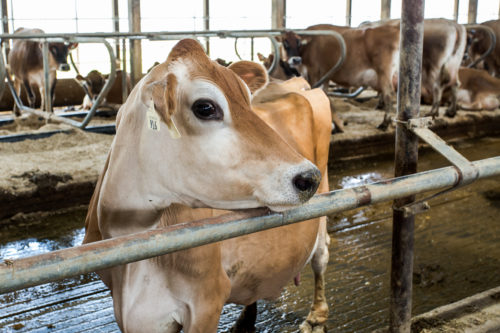Take Advantage of Milk Protein to Maximize your Milk Check
Posted: August 13, 2020 | Written By: Chelsea Schossow, M.S. - Form-A-Feed Nutrition and Production Specialist

Cheese prices have reached record highs, according to NASS weekly surveys, and it makes sense to turn our attention to the milk protein pounds shipping out the door. Recently, USDA’s milk price announcement for July had final protein at $5.63/lb and $1.96/lb of butterfat. With almost all milk marketing orders in the U.S using a multiple component pricing system, many producers can take advantage of this historic high protein price. The question is, how?
To begin, the composition and amount of proteins found in milk is largely determined by the genetics of the cow, making it difficult to alter fully. However, it can be changed somewhat through diet and management.
First, it is useful to start with how milk protein is synthesized. To start, the microbes in the rumen directly convert dietary protein into microbial protein. Microbial protein is the primary source for the essential amino acids for the cow. There are ten essential amino acids that the cow requires in varying amounts: Phenylalanine; threonine; isoleucine; histidine; arginine; leucine; lysine; valine; tryptophan; and methionine. These are either supplied to the cow directly through their diet or made by the rumen microbes. In addition to the amino acid’s protein synthesis, there needs to be an energy source to synthesize the amino acids to milk protein. The simple sugar glucose is absorbed directly from the small intestine or is formed from the volatile fatty acid, propionate in the liver and acts as the energy support for protein synthesis. Long story short, cows do not really have a protein requirement, but rather a requirement for the amino acids. This has led many nutritionists to better balance for amino acids rather than overall adjusted crude protein. These amino acids are then what contribute to the improved production of protein with the help of the energy source, glucose.
On the management side, we are looking primarily at any situation that could limit the feed intake of the cows:
- Poor ventilation or cow comfort;
- Hoof health, as lame cows do not want to get up and go to the bunk;
- Overcrowding the feed bunk;
- Temperature of the feed (if it’s too warm cows will turn away);
- Availability of fresh water and linear water space;
- Feeding a ration that encourages sorting.
These, along with other factors, limit the intake of dairy cows which in return reduces the rumen microbial protein production. Referring back to our quick lesson on milk protein synthesis, we need an abundance of microbial protein to create our amino acids which are a key component for the milk proteins!
On the nutrition side, balancing diets to optimize lysine and methionine has shown to maximize both milk fat and protein, leading to a higher return on milk production. A simple guideline for these supplemented amino acids is a 3:1 ratio. Ultimately, feeding a rumen protected methionine source can help. For more information, ask your Form-A-Feed representative about products available and to check if your values are in line.
For the most part, we all enjoy a piece of cheese on our burger or a squeaky cheese curd from time to time, but sometimes we forget the logistics that go into making the product. We can’t change the genetics of our herd rapidly to show protein results, but we can look at management and nutrition. As always, it’s important to remember both the cost and the return on investment during the decision-making process. It never hurts to take a look at options and to take advantage of the current situation to maximize our milk check. In closing, please do not hesitate to reach out to your Form-A-Feed representative with any questions and thank you to all the dairy producers for your hard work and dedication in producing such a wholesome product!